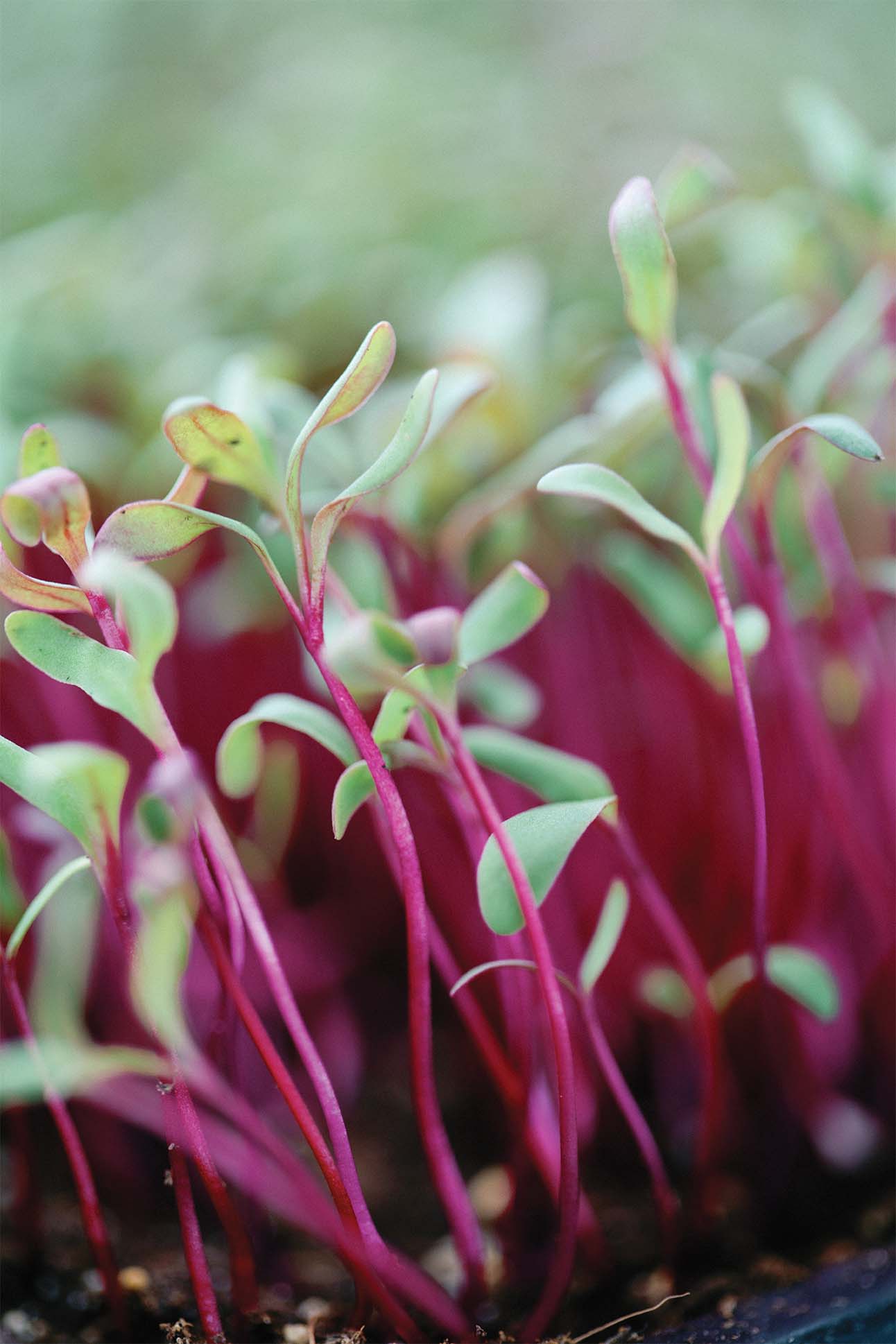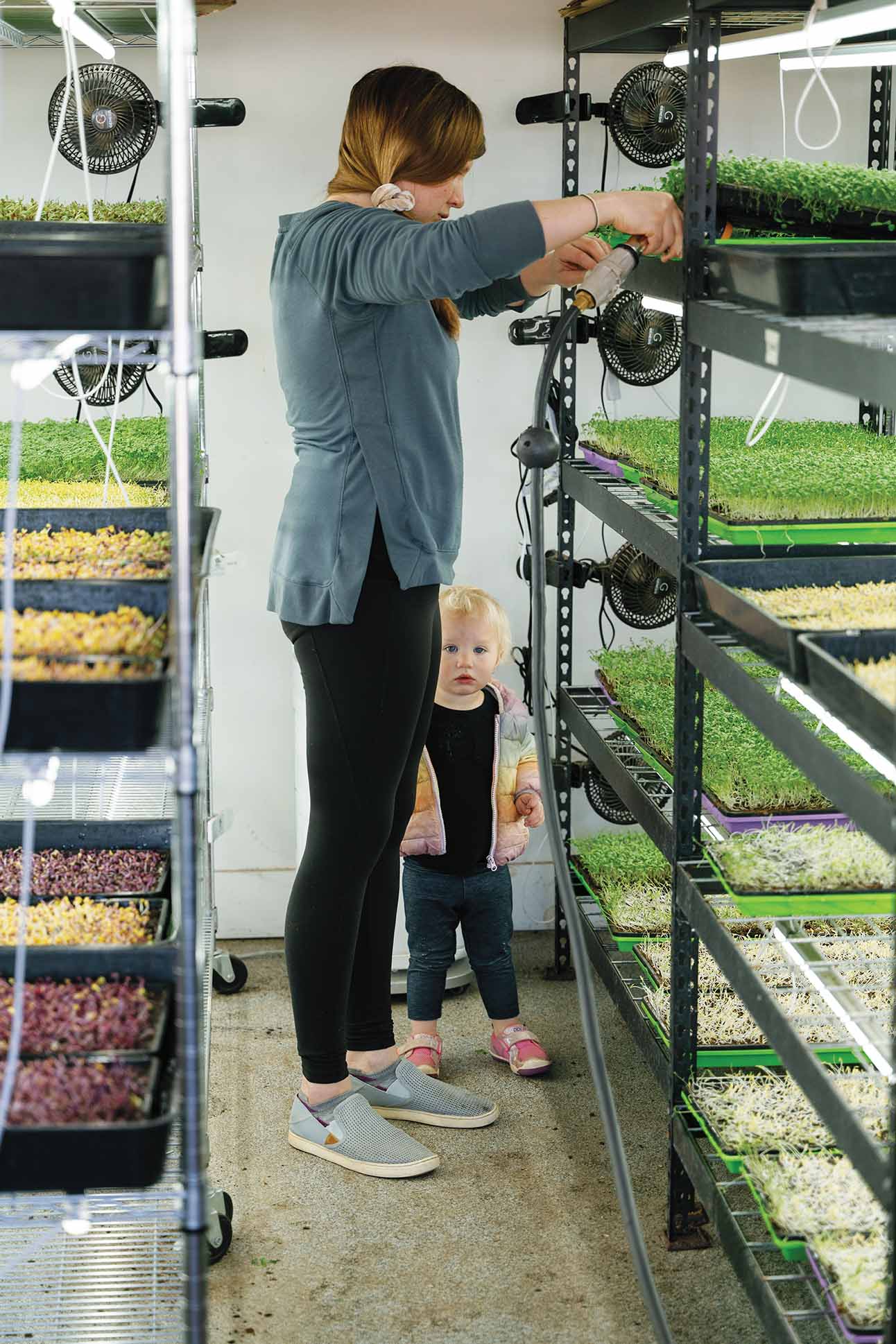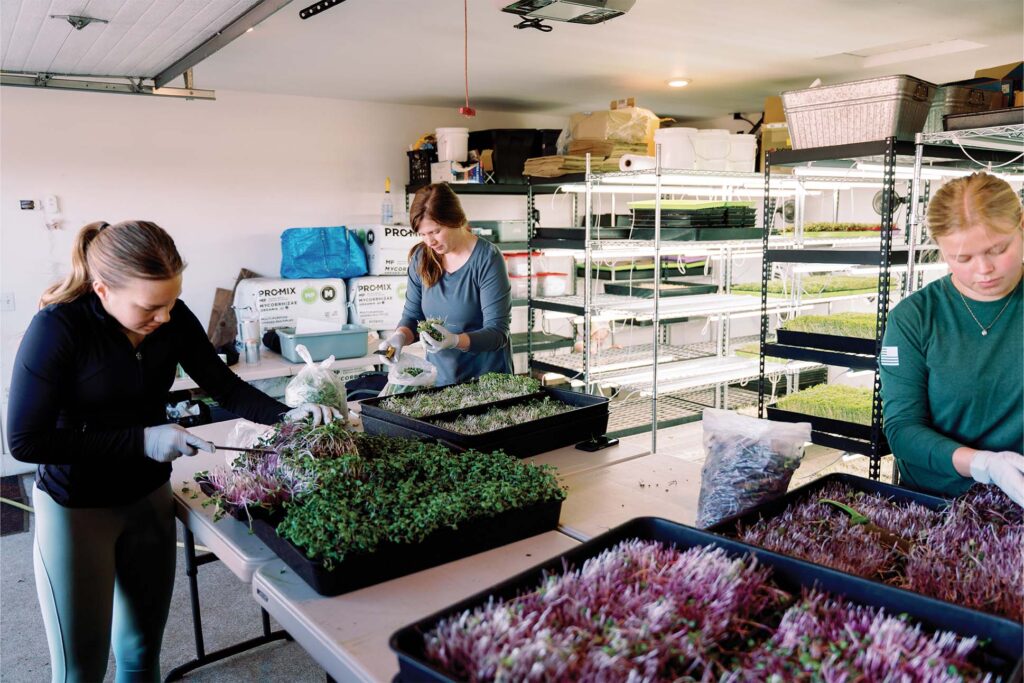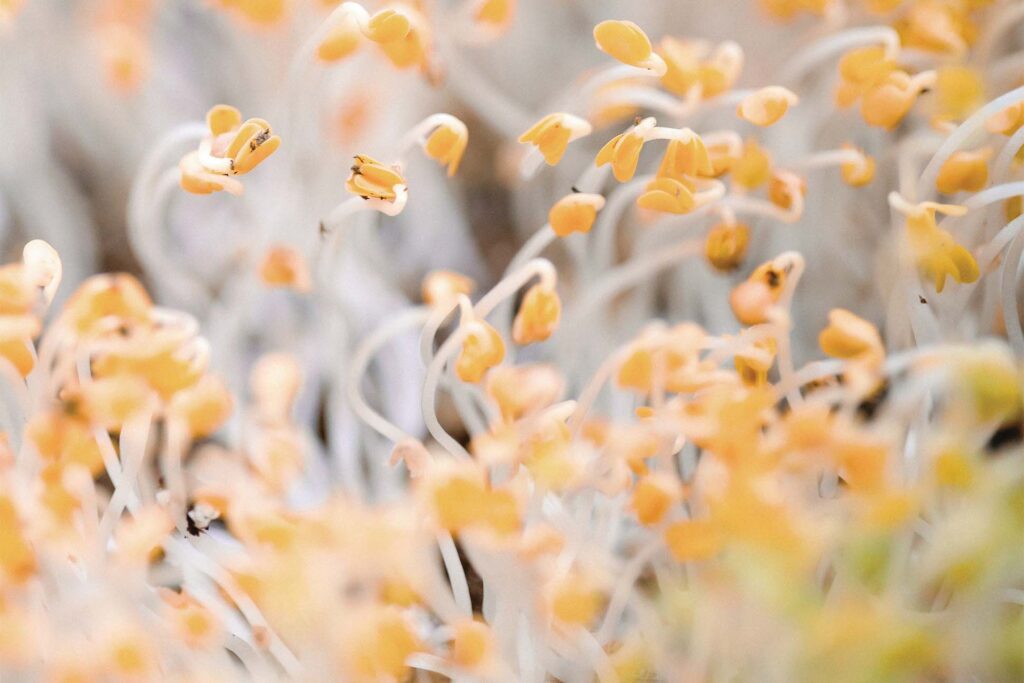Text by Amiee White Beazley
Images by Trevor Triano
It was a fairly easy decision for farmer Kaylin Harju to begin her business, Mesa Microgreens. In 2019, Harju and her family had moved to an acreage in Silt, Colorado, about an hour from Aspen on the Western Slope. Wanting a crop that was easy grow, required little room, and could supplement the family income, Harju saw a big opportunity in small produce: microgreens. She immediately turned her attention to the 625-foot garage on the property: “I cleaned it up, epoxied the floors, installed the lights, and got started.”
The daughter of Minnesota gardeners, Harju already understood the challenges she would face with her microgreens venture—mold and disease, a constant grow-harvest cycle—but it was the consumer confusion surrounding her product that gave her pause. “A lot of people call me ‘the sprout lady’ because they think what I’m selling are sprouts,” Harju says of her of encounters with curious shoppers at farmers markets. “They take a look at the microgreens, get confused, and ask, ‘How do I eat these?’”
Microgreens aren’t lettuce or sprouts, Harju explains. By definition, a microgreen is the first green of a vegetable—be it cilantro, basil, pea, radish, or one of dozens of other varieties. According to Harju, the small wonders are like a cross between a sprout and a baby green, with a versatility reminiscent of spinach.
At Mesa Microgreens, they begin their journey as seeds planted in stacked trays of rich soil. Under artificial sun from grow lights, shop heaters, and LEDs, seedlings are coaxed from their shells in a carefully controlled, low-humidity indoor environment that’s kept at a moderate temperature of 70 degrees. Growing time varies by microgreen, but the more basic varieties, like pea, radish, sunflower, broccoli, kohlrabi, and kale, take under two weeks to grow.
Once harvested, the microgreens are immediately packaged to sell. This short cycle from seed to germination to consumption means that every microgreen is nutritionally dense and packed with intense flavor. Some research suggests that microgreens provide up to 40 times more nutrition than their larger, more mature plant counterparts, offering cancer-fighting properties and protein as well as vitamins A, B complex, D, and E, calcium, iron, magnesium, and other nutrients. “Imagine eating an entire head of broccoli and benefiting from all of those vitamins and minerals,” Harju says. “With microgreens, you can get all of those super nutrients in a handful of sprouts on your salad or your sandwich.”
It bodes well for Harju’s “budding” enterprise that they’ve become less of a novelty and more of a staple on restaurant menus and in home-cooked meals. “Growing food is what I like to do,” she says. “But my real job is getting everyone to eat microgreens and making them accessible.”
Learn why chefs and home cooks are looking to the petite greens to infuse their dishes with massive flavor.
Mysterious Greens
When Harju first began selling her microgreens at the New Castle Farmers Market, there wasn’t much sales traction. Harju realized she simply needed people to try them: “I’d give them the crunchy ones—sunflower or pea—and get them hooked.”
Choose Local
“Part of our mission is to highlight, promote, and advance the rock stars of farming and small-scale agriculture,” says Tiffany Pineda-Scarlett, co-owner of The Farmer and Chef, a private catering company that runs the Rooftop Café at the Aspen Art Museum. Mesa Microgreens are featured throughout the café’s menu offerings, including its signature entrée—a Peruvian-style roasted chicken that’s brined then marinated with a citrus, tamari, garlic, and pepper emulsion. The dish is topped off with a medley of microgreens—fresh cilantro, basil, mint, and whatever else is in season. “We want our guests to know how delicious locally grown food is,” Pineda-Scarlett says.

A Feast for the Senses
Part of the magic of microgreens is their wide variety of colors, tastes, and textures. Options abound: “The radishes are nice and spicy, the beets have a deep flavor, and the cilantro is super bright and fresh,” says Joey Scarlett, Pineda-Scarlett’s husband and co-owner of The Farmer and Chef. Emma Kottenstette of Farm Runners, a regional food distributor of family farm-grown produce, meats, dairy, and eggs, echoes the sentiment: “Micro popcorn shoots, red amaranth, and garnet mustard add a pop of color and a burst of flavor to elevated dishes.”
Where To Find
“Mesa Microgreens is a great asset for our high-end clientele looking for specialty items,” Kottenstette says. “The dozen or so varieties of microgreens grown in Harju’s garage remain in high demand.” A small but prized ingredient, Mesa Microgreens are featured in restaurants throughout the valley, including Aurum in Snowmass and The Pullman in Glenwood Springs, along with PARC, Meat and Cheese, Bosq, and Element 47 in Aspen.







